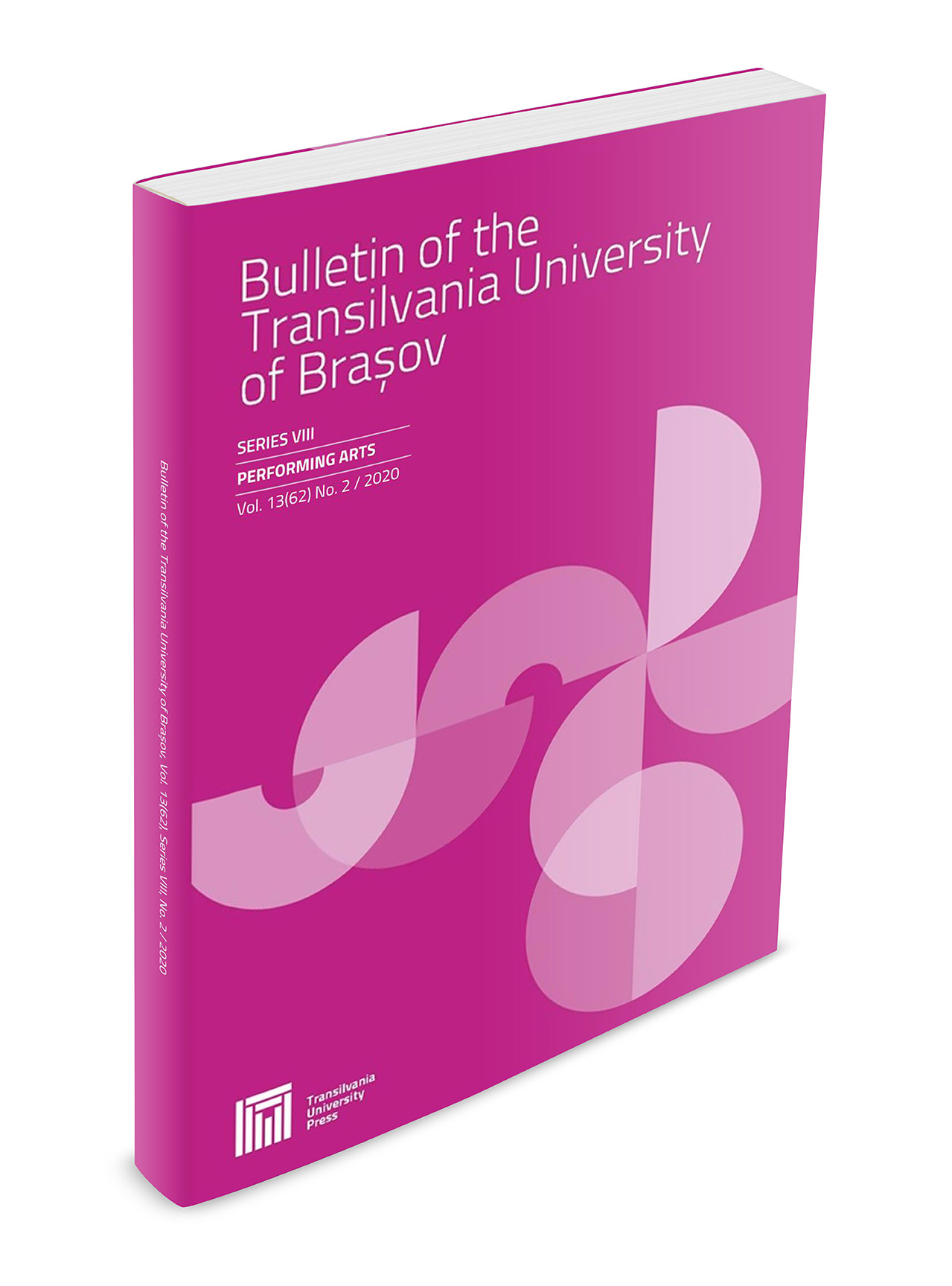Heterophony in the Instrumental Show of Mauricio Kagel. “Sur Scėne” (1960)
Keywords:
instrumental theatre, heterophony, anagram, isolexism, Sur SceneAbstract
The weak receptiveness of the audience to a music prototype characterized as ultra-abstract is often coupled with the Avant-garde of the 1950es-’70es. Elements of modernity, developed/propelled by some artistic groups and that comes under the new functions of language (incommensurable with those of the musical grammar of the late 19th century), function through yet inaccessible idioms, through a category of composing techniques united under the roof of serialism or post-serialism. The fan of possibilities for the expression of sound which stressed the articulation of the “Darmstadt” cultural phenomenon found a particularly original exponent in Mauricio Kagel (1931-2008). To aesthetically argue another genre of expression of sound: instrumental theatre, means to supply the logic of a paratextual discourse, a semiosis included in the genre of theatre, in the given case even that of the “absurd”. The concept of heterophony finds here unsuspected significance in the classical sense, marking this semiosis. Sur Scéne, the work that gives the “green light” to the evolution of the new genre, arches synchronicities and lecture levels by becoming an object of associations, re-anchoring modernist theses which “sharpen” our intellective perception to the maximum.Downloads
Published
Issue
Section
License
Copyright (c) 2015 Bulletin of the Transilvania University of Braşov. Series VIII: Performing Arts

This work is licensed under a Creative Commons Attribution 4.0 International License.




